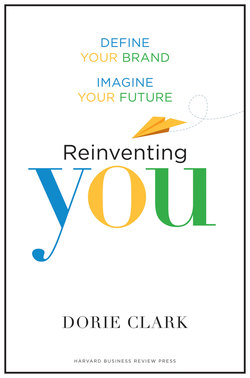Читать книгу Reinventing You - Dorie Clark - Страница 20
На сайте Литреса книга снята с продажи.
Bring It Together
ОглавлениеFinally, synthesize your data. Any high-quality pollster strives to get a representative sample (if you have too many senior citizens or not enough Hispanics in the pool, your result can be dramatically skewed). Similarly, be sure you’re assigning the appropriate weight to each variable; rather than obsessing about something one person mentioned, you’re looking for patterns. It’s easy for something negative to stick in your craw (one friend has quoted a critical review of her work to me so many times that I can recite it verbatim, and it was written a decade ago). But the power of one harsh appraisal can cloud your understanding of how you’re perceived in general. Remember: you’re looking for patterns and trends.
Ask yourself the following questions, and make sure you’re taking into account every category—360 interviews, your focus group, your online presence, and performance reviews and recommendation letters:
What adjectives—both positive and negative—do people use to describe me?
What skills do they say I have—or lack?
What aspects about me or my brand are most frequently talked about?
Are any aspects of me or my brand cited as unique or unusual?
Now, most importantly, you have to determine whether you like what you hear. Begin to think about what words you want people to link you with. Notes Cohn, “Maybe people say, ‘I see you as thoughtful, methodical, and nice.’ Those are lovely professional qualities, but it’s not a leadership brand like ‘decisive.’ It’s not bad, but it’s not going to get you to the C-suite.” Our job in the next chapter is to help you identify where you want to go—whether it’s the C-suite of your current company or into a new field altogether—and begin to reshape your brand to get there.
